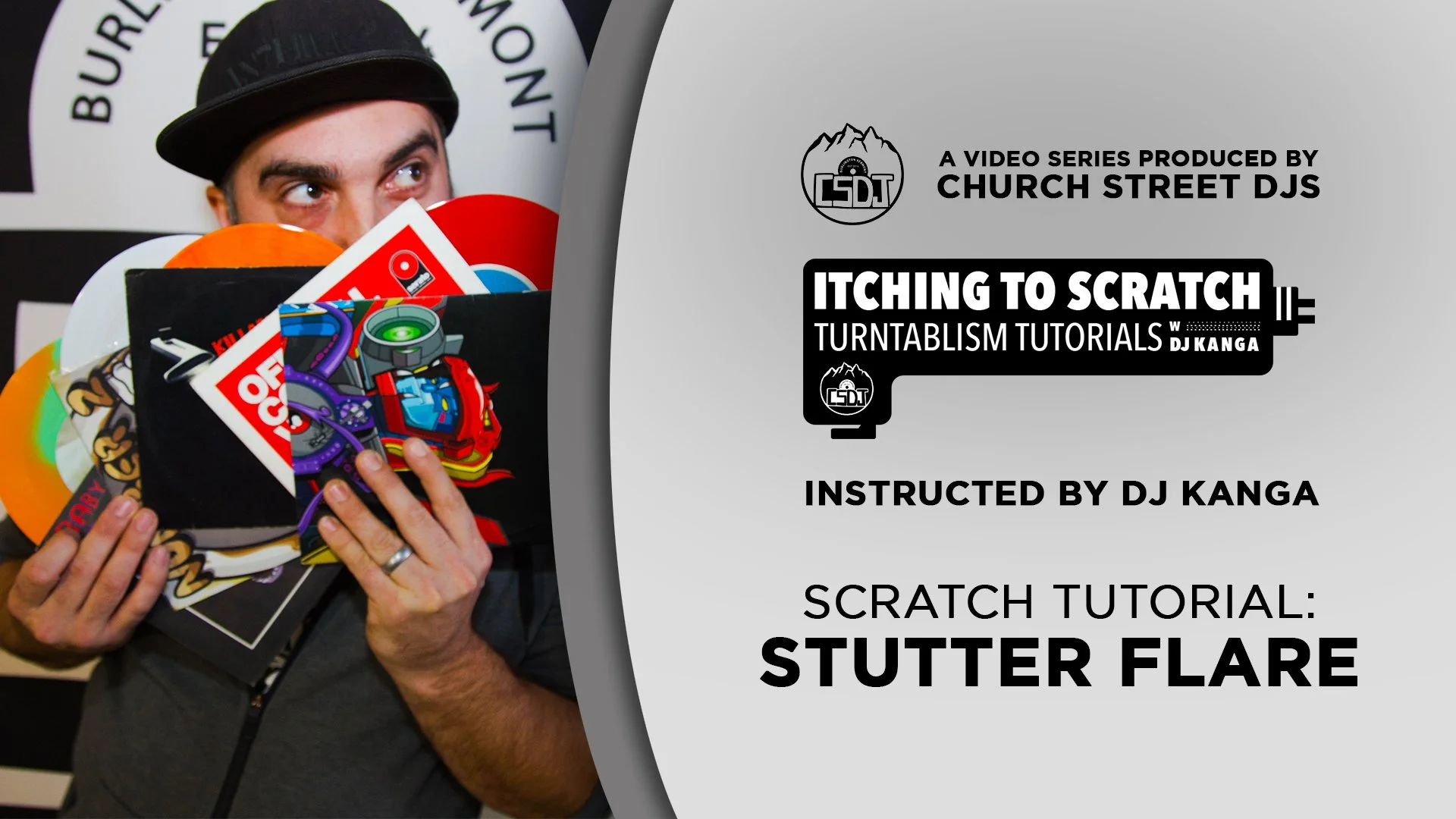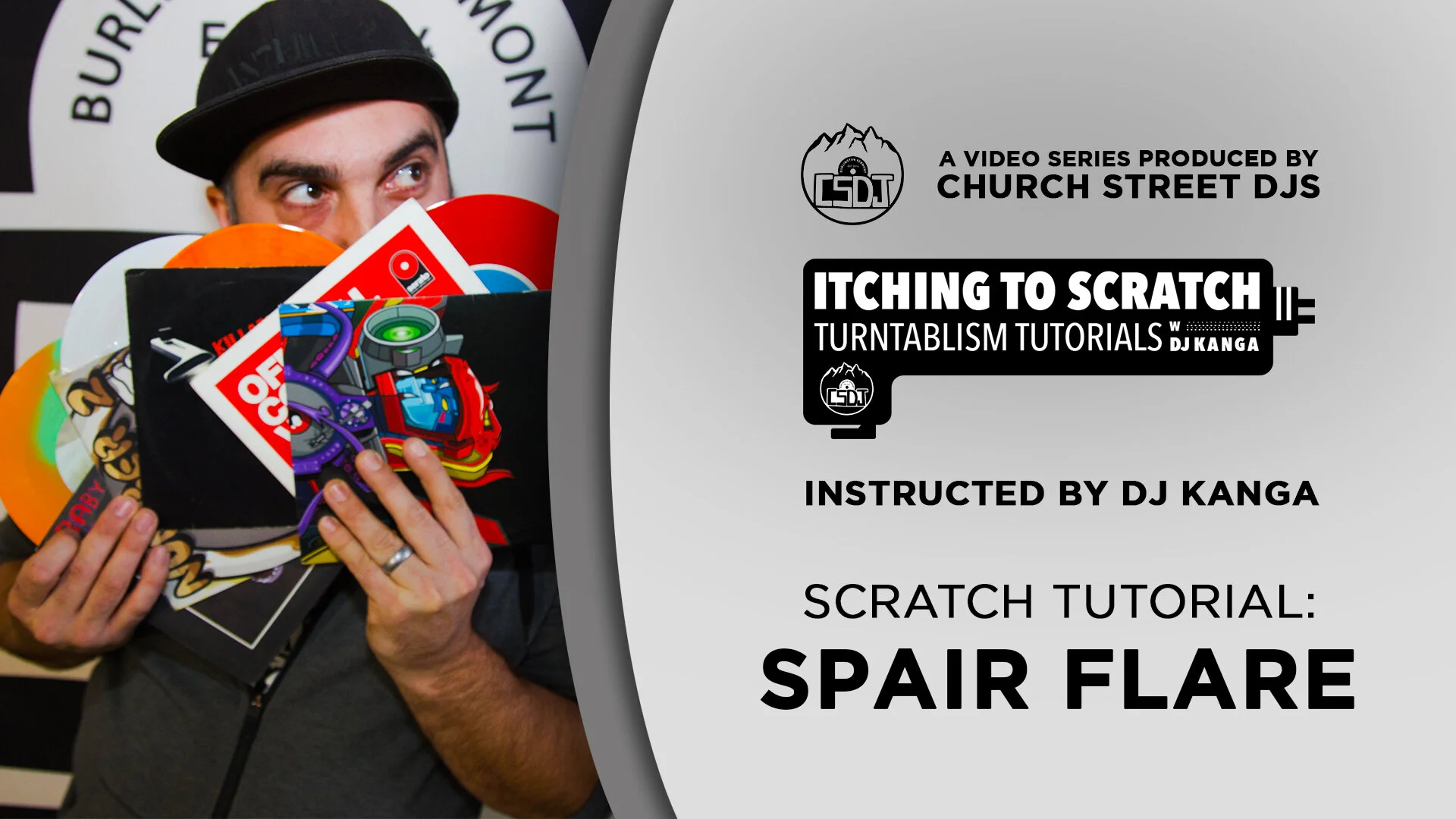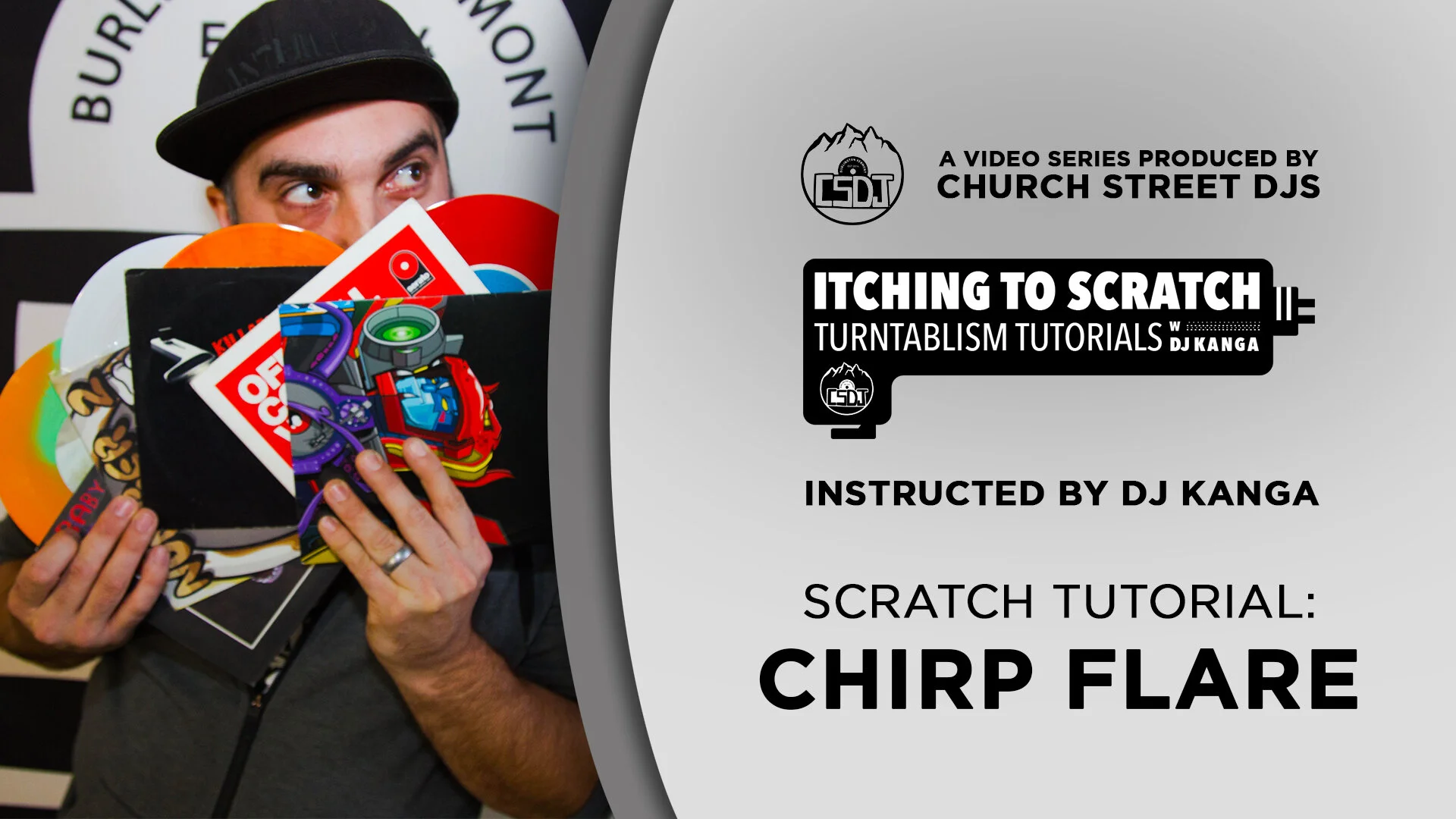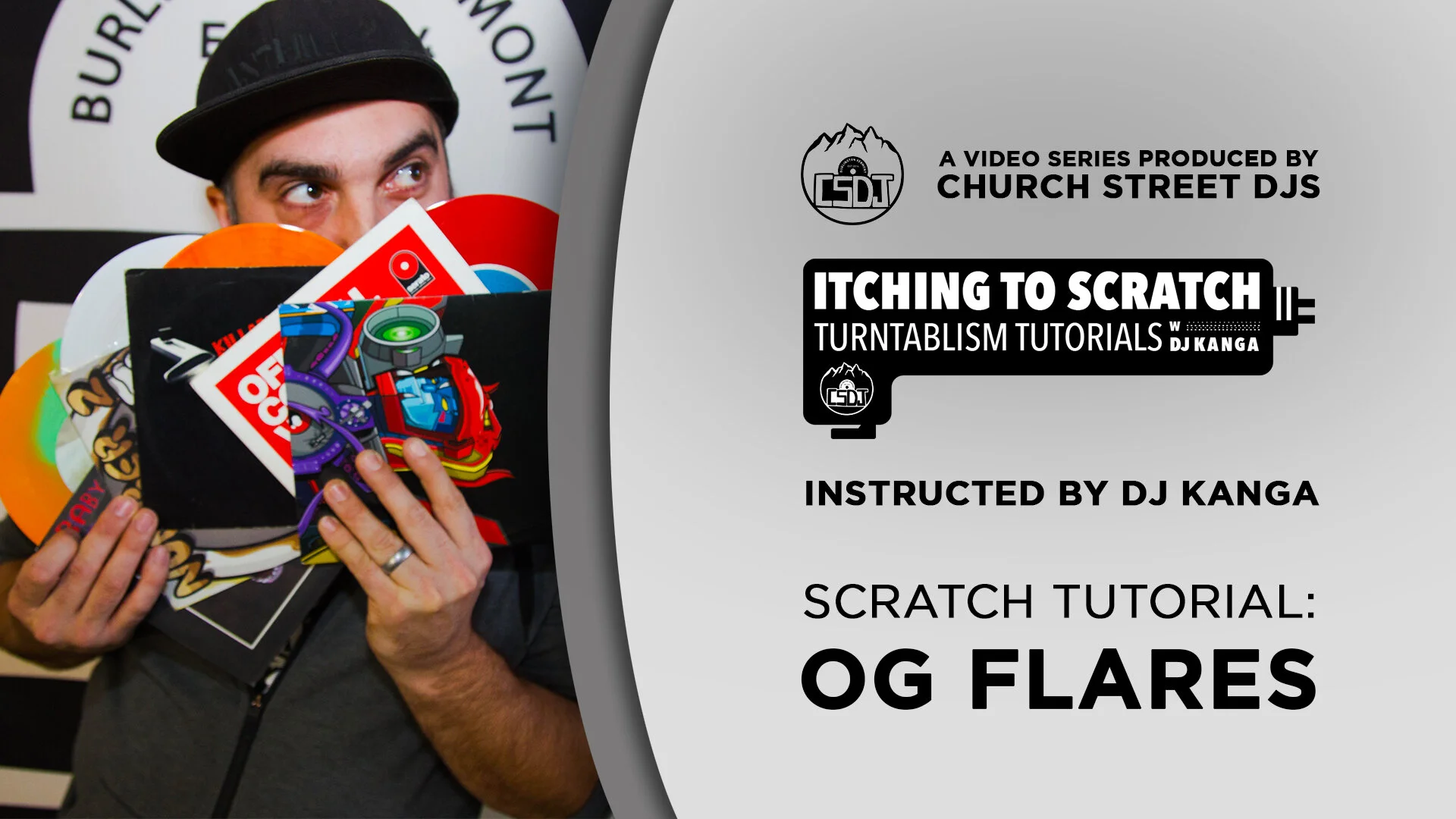Week 50: Zeroing Out The Tonearm
Zeroing out the tonearm is something every good DJ should know how to do. It is recommended if you're swapping needles between different (new or used) turntables, setting up at a gig, or just for calibration. Zeroing out the tonearm can prevent record burn, decrease skips, and preserve the life of your stylus.
Week 51: Scratch Drumming
Scratch drumming is when a DJ scratches 2 or more sounds in a rhythm similar to a drum pattern. There are no preset patterns with this scratch, it is more like actually playing the drums. Find a bass kick and snare hit that are close together (1/8 and 1/16 notes work best) and make a drum pattern out of the two sounds. This usually starts with a simple rhythm only using forward scratches and the speed of the record. Scratch drumming can evolve to any pattern you can think of.
Week 52: Complete Review
Here we are, the end of our Itching to Scratch series! I hope everyone has been able to learn and apply new cuts to their arsenal of tricks! As a way to commemorate the occasion, instructor DJ Kanganade runs run through every scratch that was covered throughout the year, back to back to back. While this isn’t something normally done while performing, it is a great way to remind yourself of all the scratches you’ve practiced. Give it a try yourself and good luck!
Week 31: Spair Flare
Spair Flare was made famous by DJ Spair. This pattern sounds a lot faster than it really is. The Spair Flare is executed by adding a small baby scratch to the beginning of a 1 Click Flare. The objective is to have a quick and small enough baby before your 1 Click Flare that shouldn’t affect the timing of your flare but create 2 extra notes, 6 in total.
Week 32: Chirp Flare
The chirp flare was invented by D-Styles. It is a more nuanced way of doing Spair Flares and takes an extra crossfader movement but the sound achieved is much sharper. As the name states, the scratch is executed by performing a chirp immediately followed by a 1 click flare. The trick to achieving the right sound is to make a short chirp followed by a long 1 click flare. Makes 6 notes in total. Also called a “squeeze scratch”.
Week 33: Navigate Your Record (part 1)
DJs and turntablists read a record like a clock. They do this by putting a mark, sticker, or some other indicator on the middle label portion of the record. As the record spins around, the DJ can listen to the samples playing while viewing the mark on the record, creating a visual reference point for where the various samples begin and end.
Week 34: OG Flare
Originated by D-Styles, the OG Flare scratch is our first “two click” fader scratch. This fader movement of doing two fast clicks in repetition will be the basis for many scratches to follow. Starting with the fader open, push the record forward and make one click at the end of the sound, just like you would for a chirp. On the back stroke, perform the same movement as a 1 click flare, chopping the sound in half with one click. Makes 3 notes.









